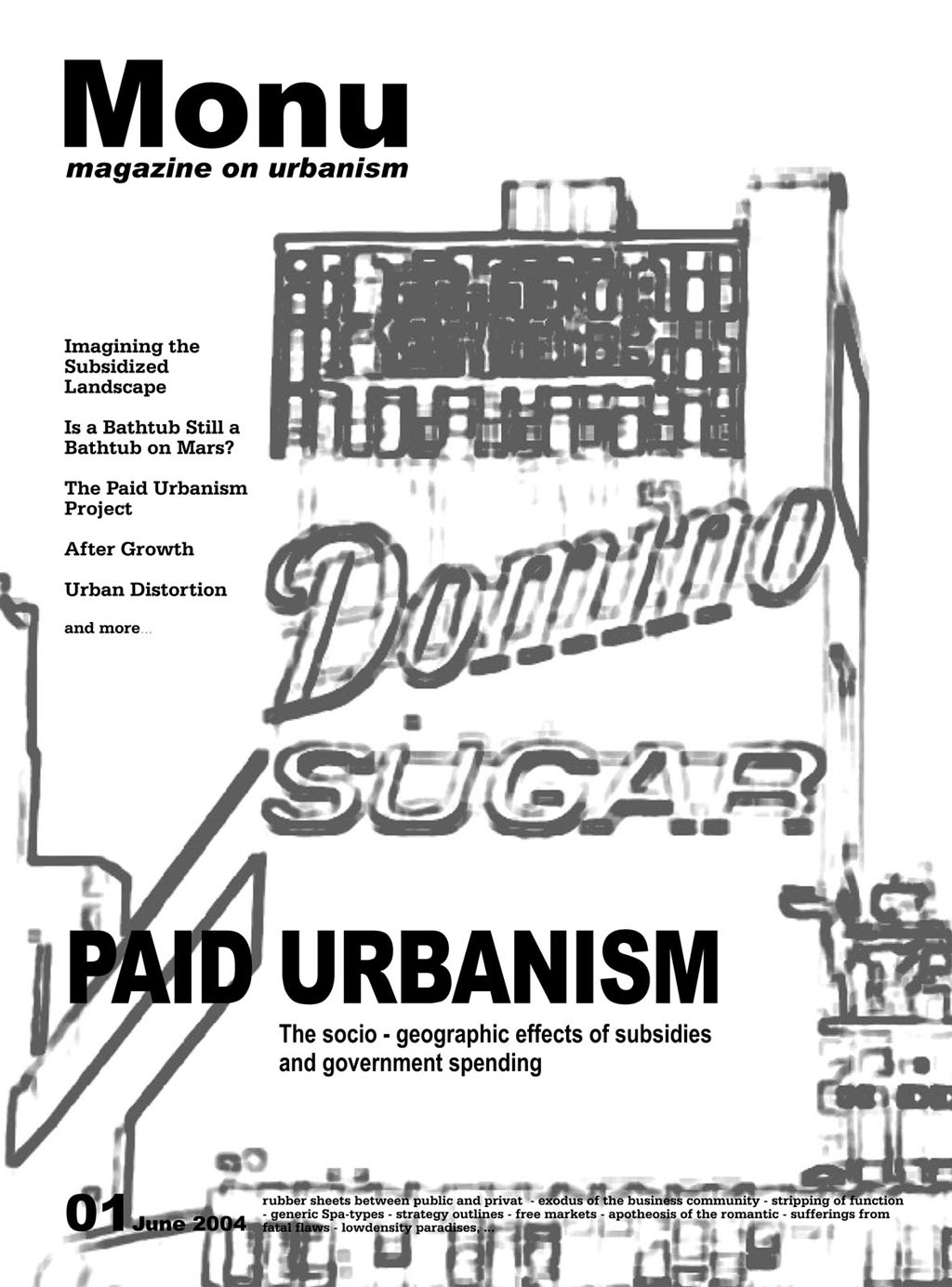16-06-04 // MONU #1 – PAID URBANISM

(browse the entire issue #1 on Youtube)
Imagining the Subsidized Landscape by CUP; After Growth by CASE with Reinier de Graaf; Urban Distortion by Shireen A. Barday and Damon W. Root; Urban Money Beats Global Money by Hans-Henning von Winning; The Paid Urbanism Project by Thomas Soehl and Bernd Upmeyer; SpaMania by Kai Jonas; Is a Bathtub Still a Bathtub on Mars? by William Alatriste; Richard J. Daley’s Chicago Civic Center and the Modernist Urban Landscape by Emily Pugh
Our experience of urban life today exists as it does because we have a complex system of subsidies interacting with our urban geography. Taxes, once extracted from the market economy cycle back to the masses as paid urbanism. Used wisely or not, spread fairly or unfairly, this money is probably one of the strongest forces animating our urban conditions today. The places we live in today are in many ways shaped by government spending – Subsidized Landscapes. Since the ‘90s, big enthusiasm about total privatization has subsided. Nowadays, everybody realizes that there is a need to keep certain things in the hand of public administration. Redistribution of enormous revenue is a commonly accepted means of keeping civil democratic societies working. Government intervention, taxing and spending are the terms we use to describe this state. Caught in an enormous network of redistribution that pervades everything and everybody, the power and influence of these processes rarely makes itself visible; we are never fully aware. A Kafkaesque web of bureaucracies constantly recreates and resuscitates our urban landscapes. Drifting through cities with their thousands of invisible dependencies and relationships, no one person can exactly define what keeps everything alive. Everything seems to be vibrant, but somewhere down the line, there are crosscutting streams and flows of decisions and administration behind it. It has been paid for. The multitudinous products of paid urbanism are hard to identify or define, but lie hidden behind every stone of the city. The effects of paid urbanism on urban settings cannot be overemphasized – without paid urbanism, cities as we know them would not exist. This first issue shines a number of spotlights into the thicket of subsidies and paid urbanism. What do networks of subsidies look like in fields like housing and farming in the US and what are their consequences for cities? What are the aesthetic impacts and absurdities of paid urbanism in places as different as Chicago, Coney Island (NYC) and Thuringen (eastern Germany). We feature projects that rethink the networks of paid urbanism and essays that reflect on the interwoven history of subventions and urbanism.
(Bernd Upmeyer, Thomas Söhl, Editors, June 2004)
Find out more about this issue on MONU’s website.